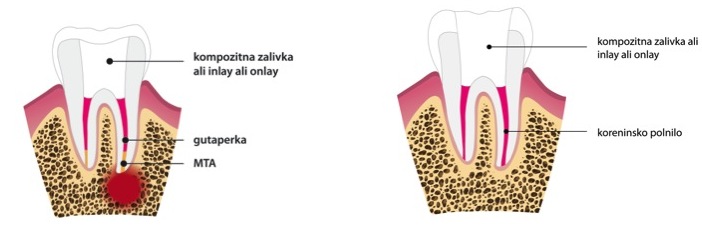Root Canal Treatment
Root canal treatment or endodontics is an extremely complicated procedure that involves removing the infected or damaged tissue from the tooth interior. It is crucial that the interior of the tooth is thoroughly cleaned to the very ends of the root canals. With endodontic treatment, it is possible to preserve a tooth that would otherwise have to be extracted. Although the tissue has been removed from it, the tooth remains alive and feeds from the surrounding periodontal tissues.
The pulp inside the tooth can die because of tooth decay, an injury or for other reasons. In all cases, the dental pulp or nerve is exposed to bacteria in the saliva and becomes infected. Unless the condition is treated in time, bacteria will travel down the root canal into the jawbone and form a nodule filled with pus, also known as granuloma. Accompanied by a variety of symptoms, the process is often barely noticeable. “I stayed out in the wind for too long” or “I just got a toothache,” people often tell their dentist. In any case, an infection can take several years, but eventually it will result in a swelling and pain that tends to wake you up in the middle of the night.
When a granuloma occurs, there are two solutions
- Root canal treatment or endodontics. An antibiotic alone can’t solve the problem, because the blood flow to the pulp has been obstructed, which prevents the antibiotic from reaching the bacteria.
2.Tooth extraction.

Before the root canal treatment, we have to establish that the patient and the tooth make for suitable candidates for treatment. It is important to assess the condition of the tooth and determine whether enough healthy dental tissue is left for the reconstruction and full use of the tooth after the treatment. If this is not the case, it is better to go with the second option in order to avoid complications later on.
